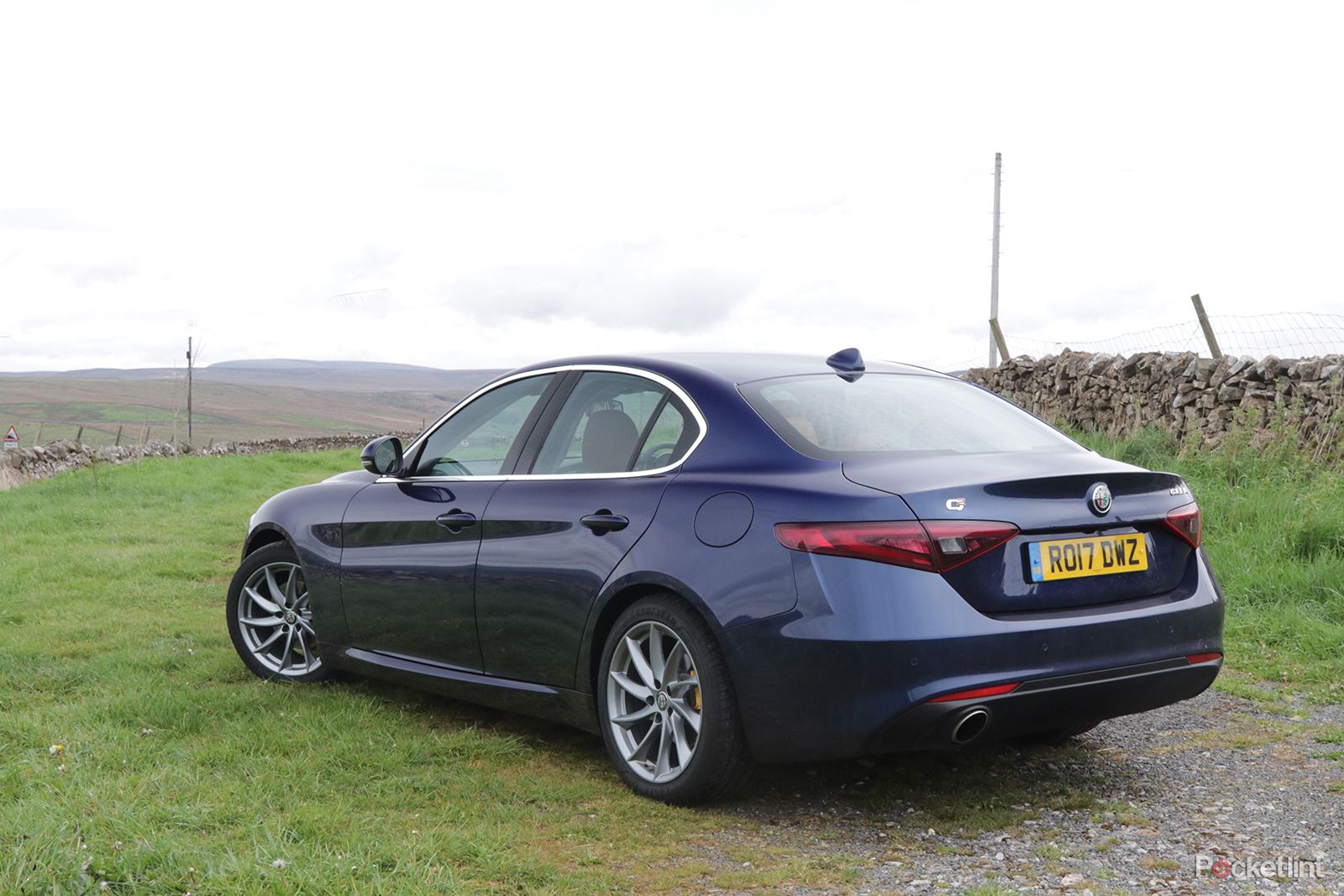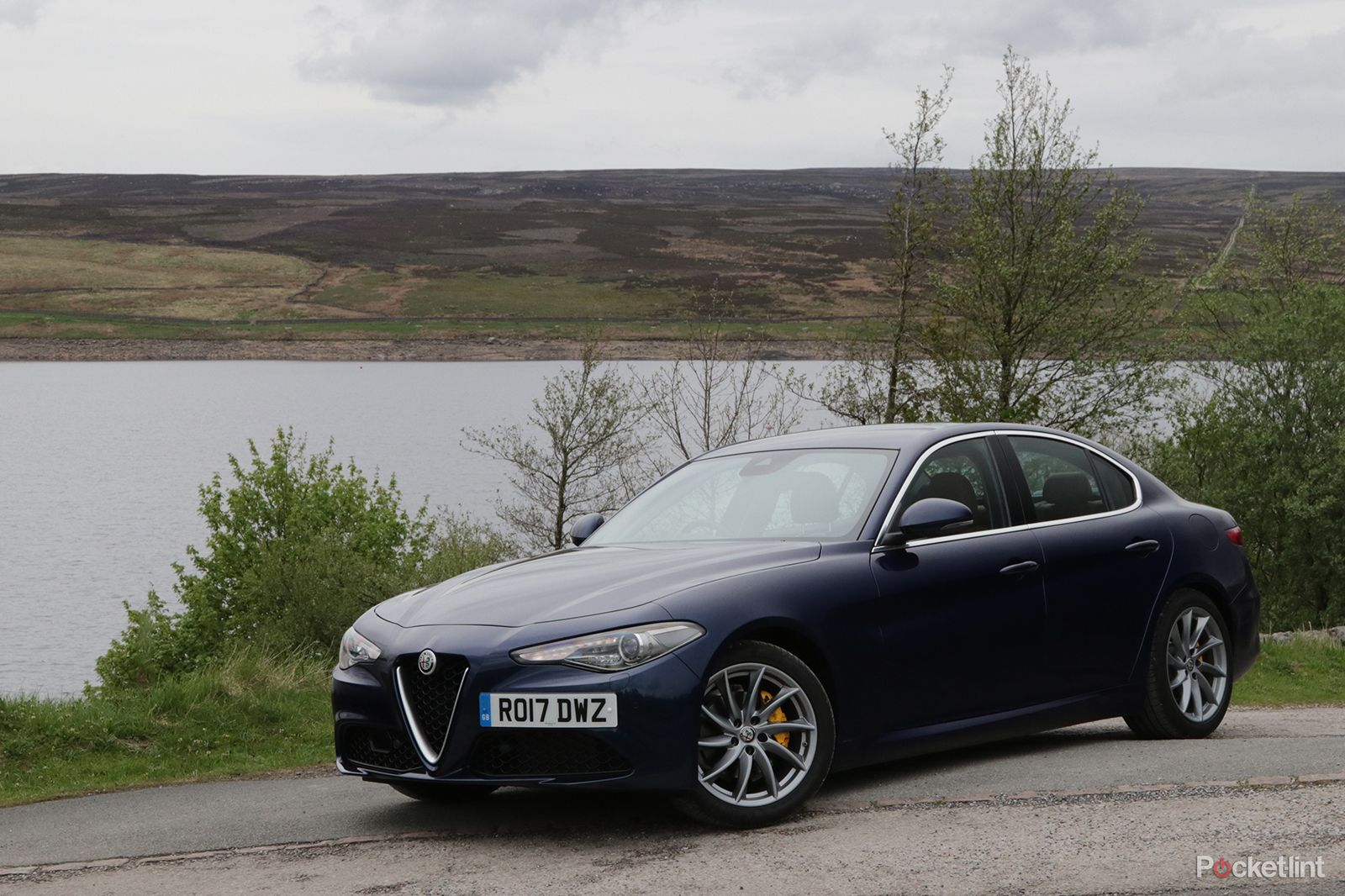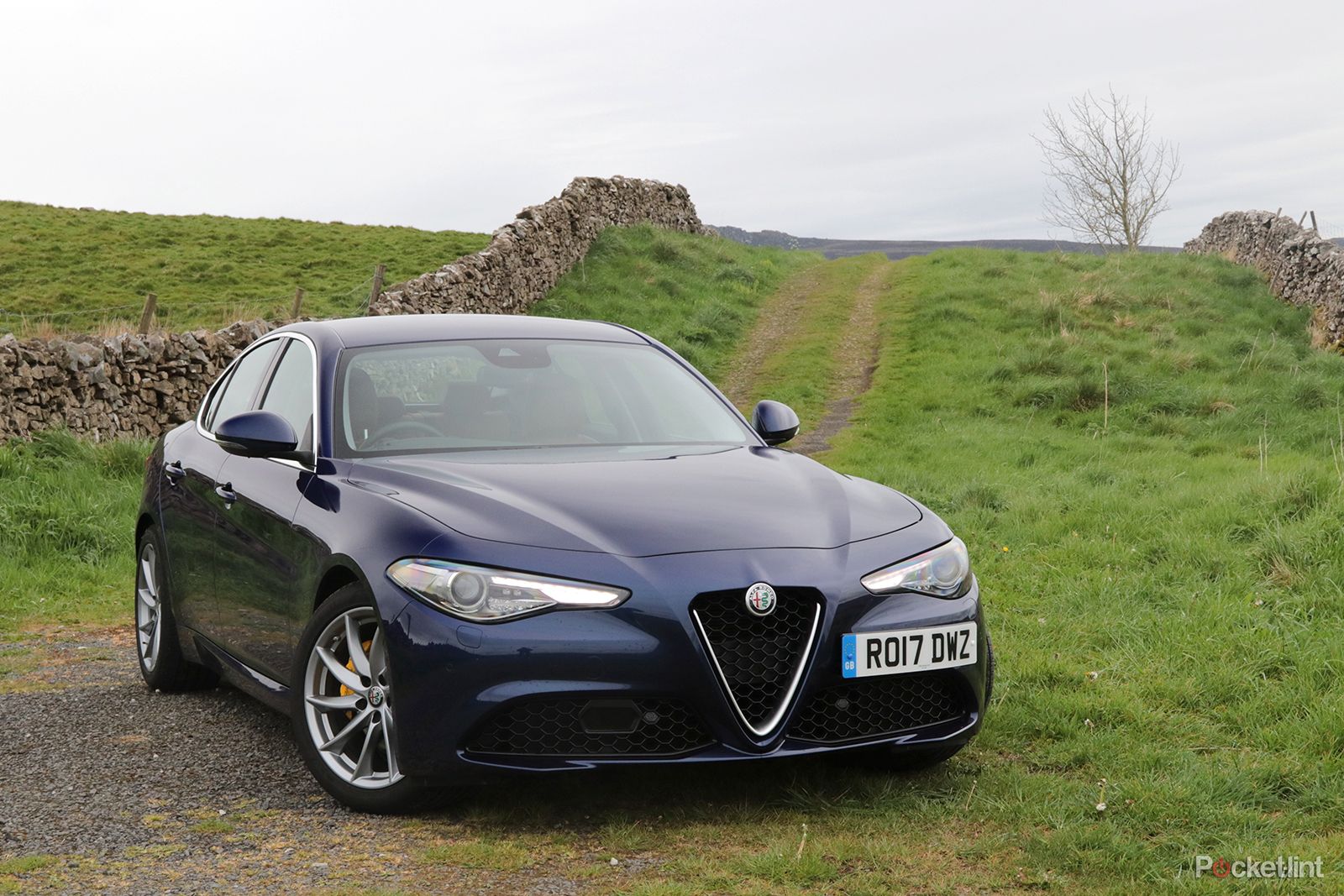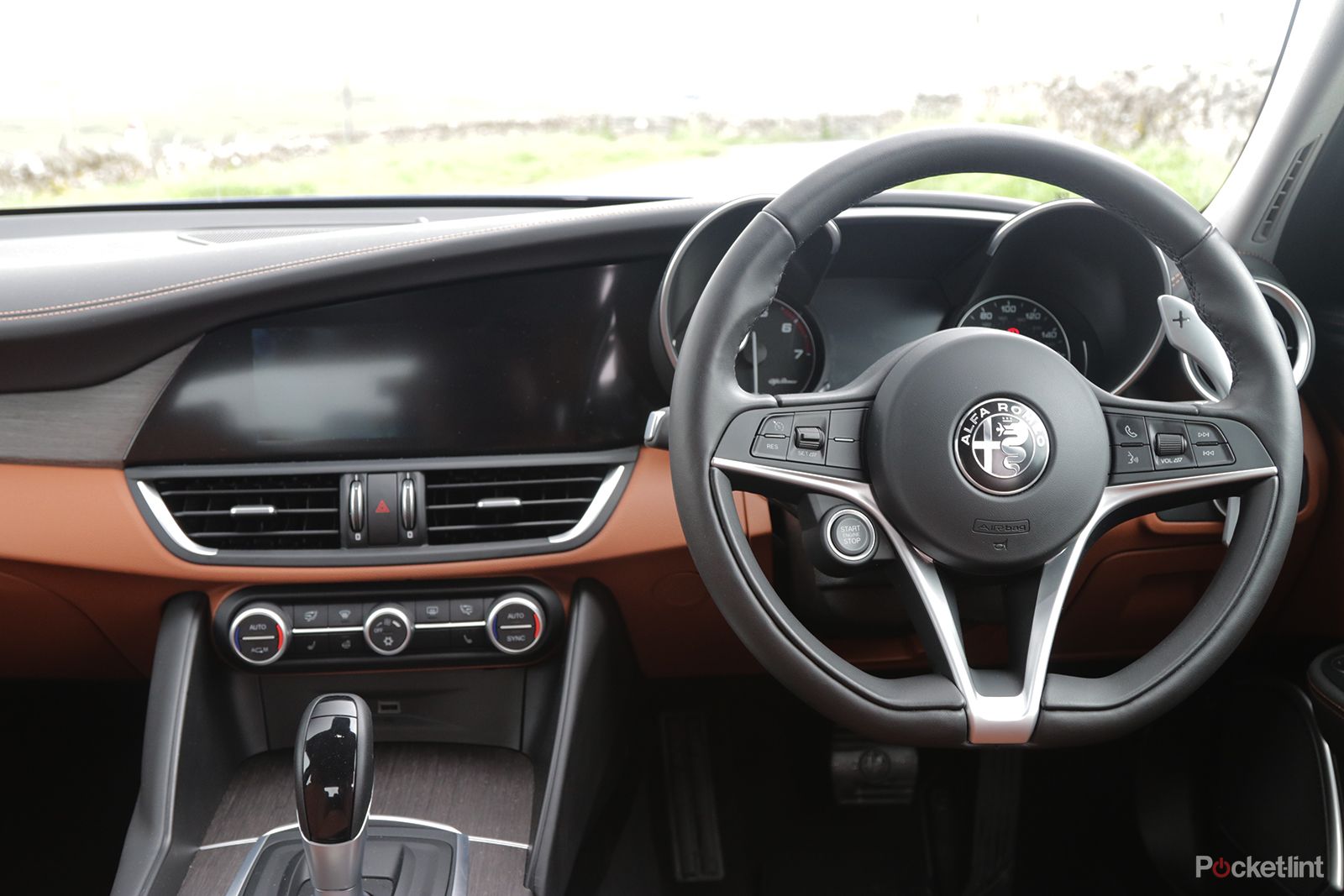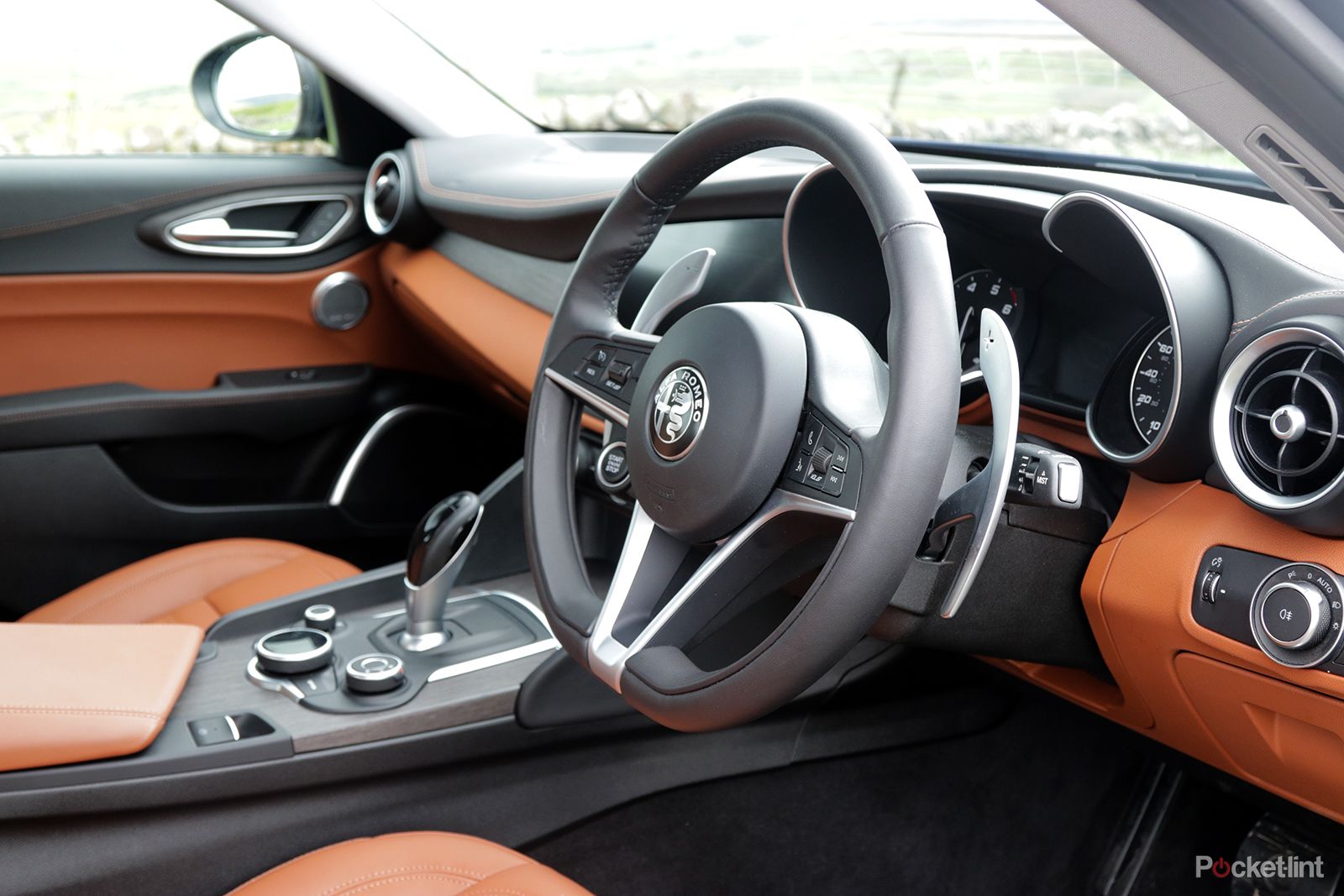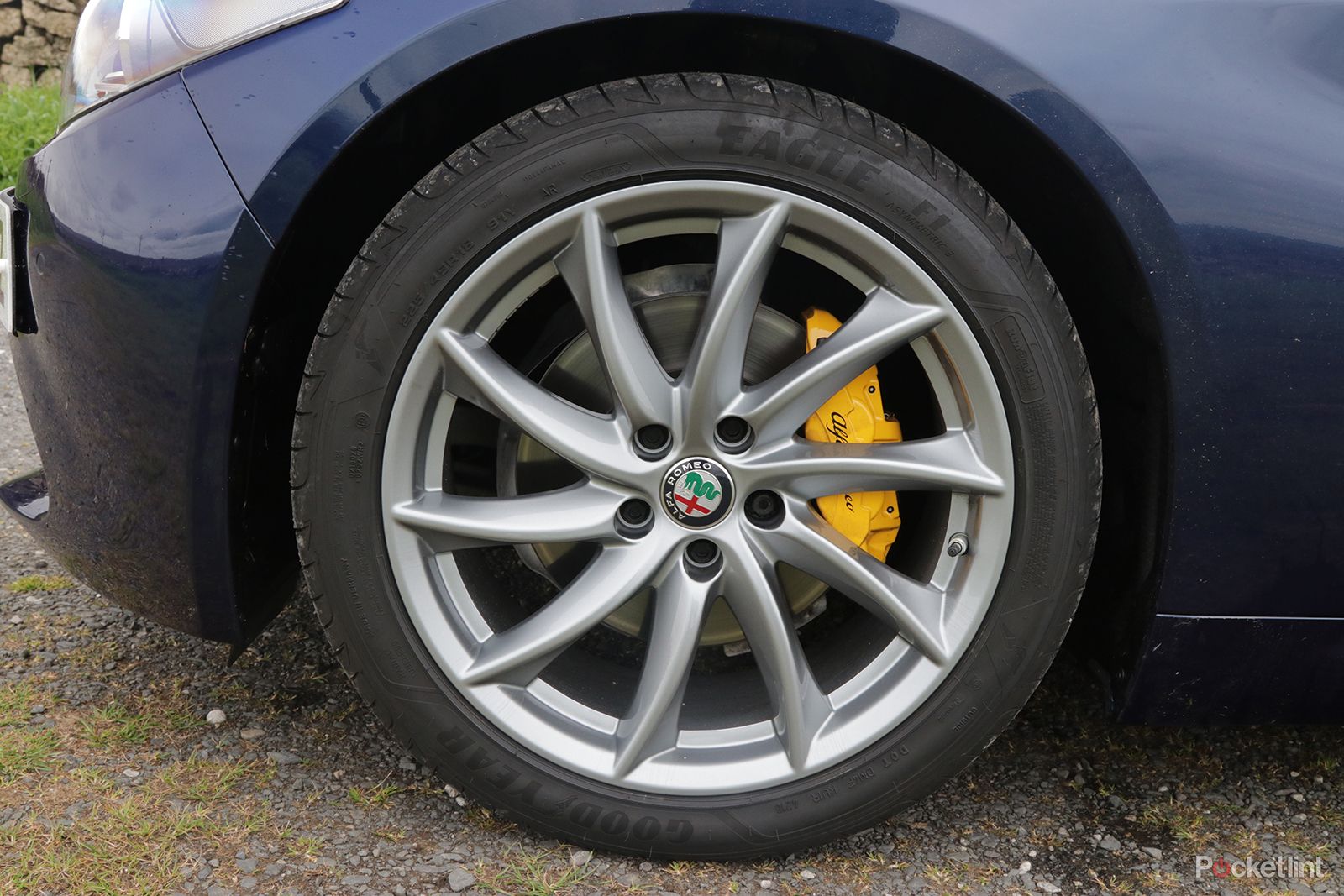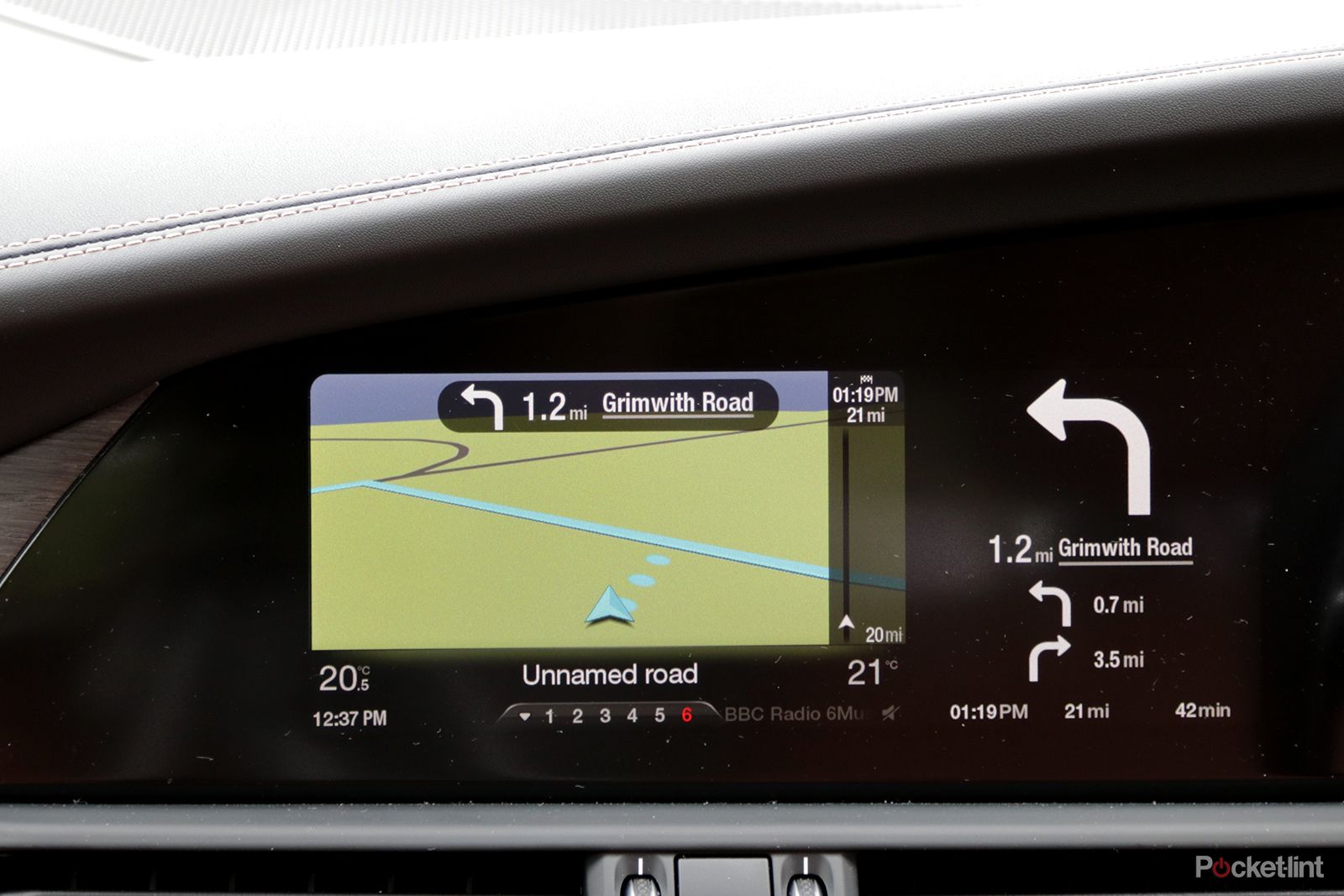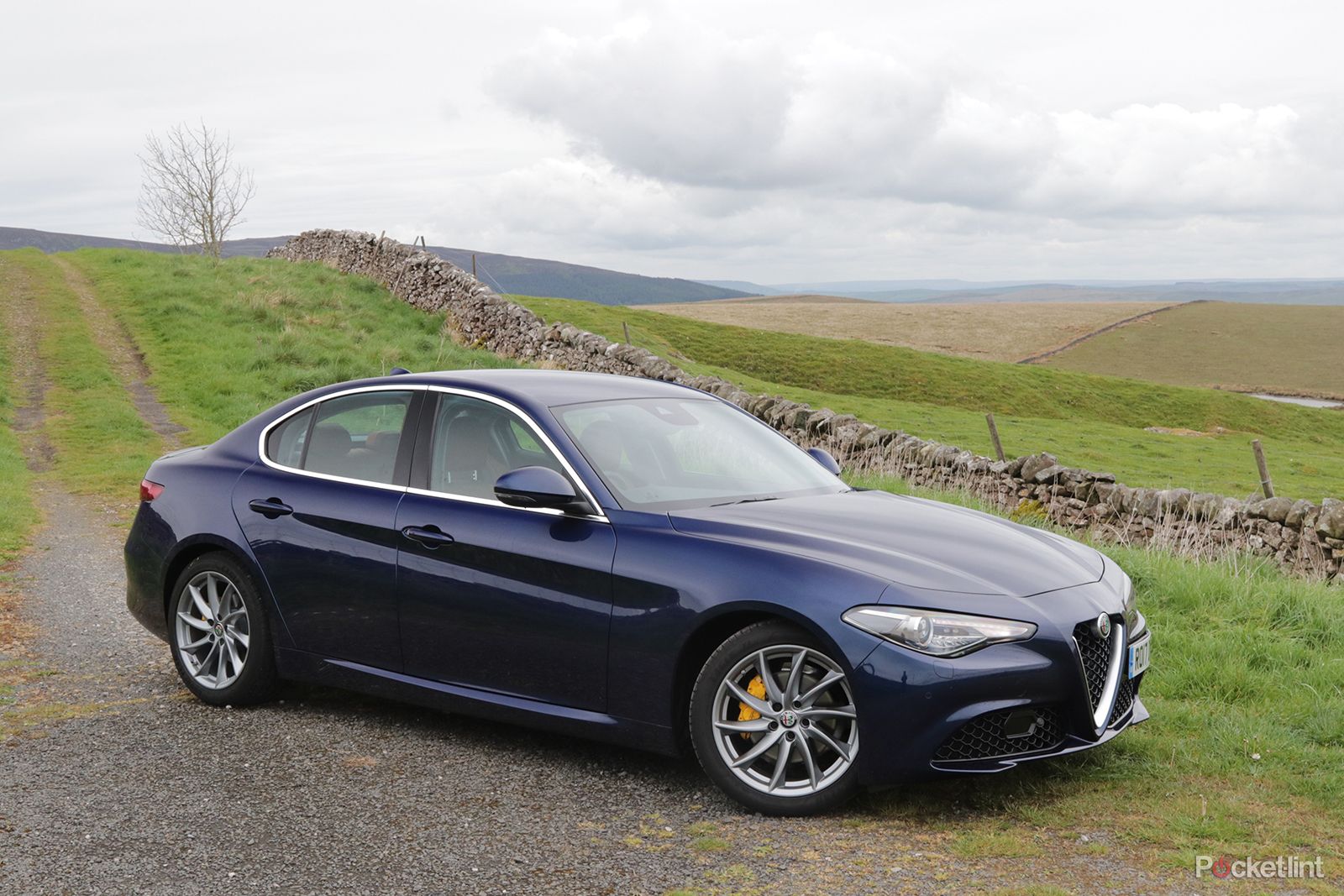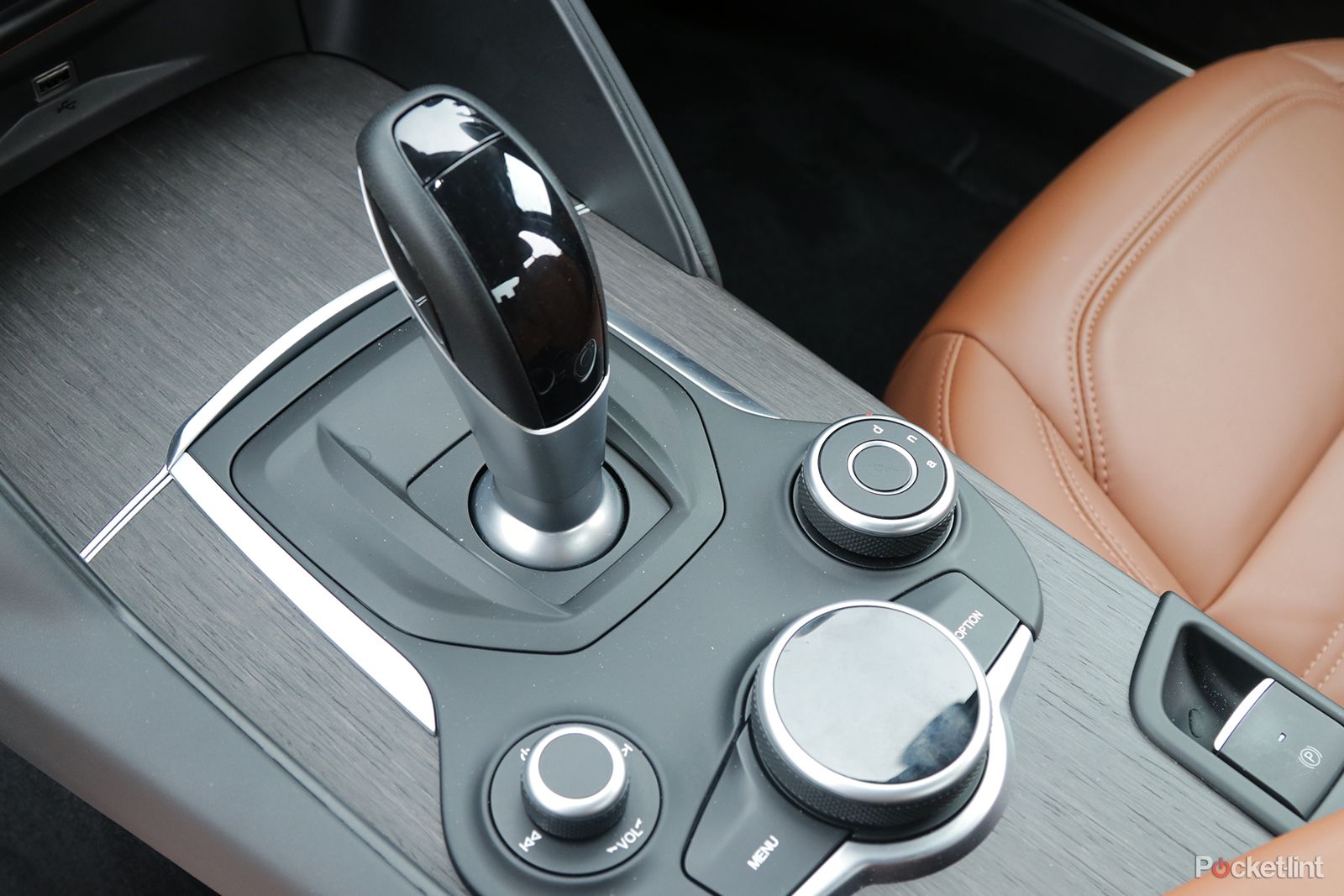There is a saying that, to be a true car fan, you must have owned an Alfa Romeo. But a Mito, and a Giulietta (the extent of Alfa's range until now) hardly represent petrol-head nirvana. For Alfa fans, the Giulia has been a long time coming.
Our quick take
There are numerous ways we can judge the Giulia. Its development team had a thankless task, because everyone who cares passionately about the brand, has a view on what a new Alfa should be.
From our perspective, it is a true Alfa because it is a car to be frustrated by, and thrilled by, too. But this time, the frustrations are small enough to live with. If you're a company car buyer, you can also discount our petrol engine whinges because you'll probably be buying a diesel anyway.
And if there is a true surprise, it is this. Here is a modern Alfa that you can genuinely buy with your head, on merit. Many won't even consider it based on the company's past reputation, which is a shame because Alfa now has a car capable of standing toe-to-toe with highly evolved German premium brand competition. Whisper it, but the Giulia even outpoints them in some areas, including critically, the way it drives down a winding road. We wish it looked more distinct, but for the most part, we're pleased to say, welcome back to the game, Alfa Romeo.
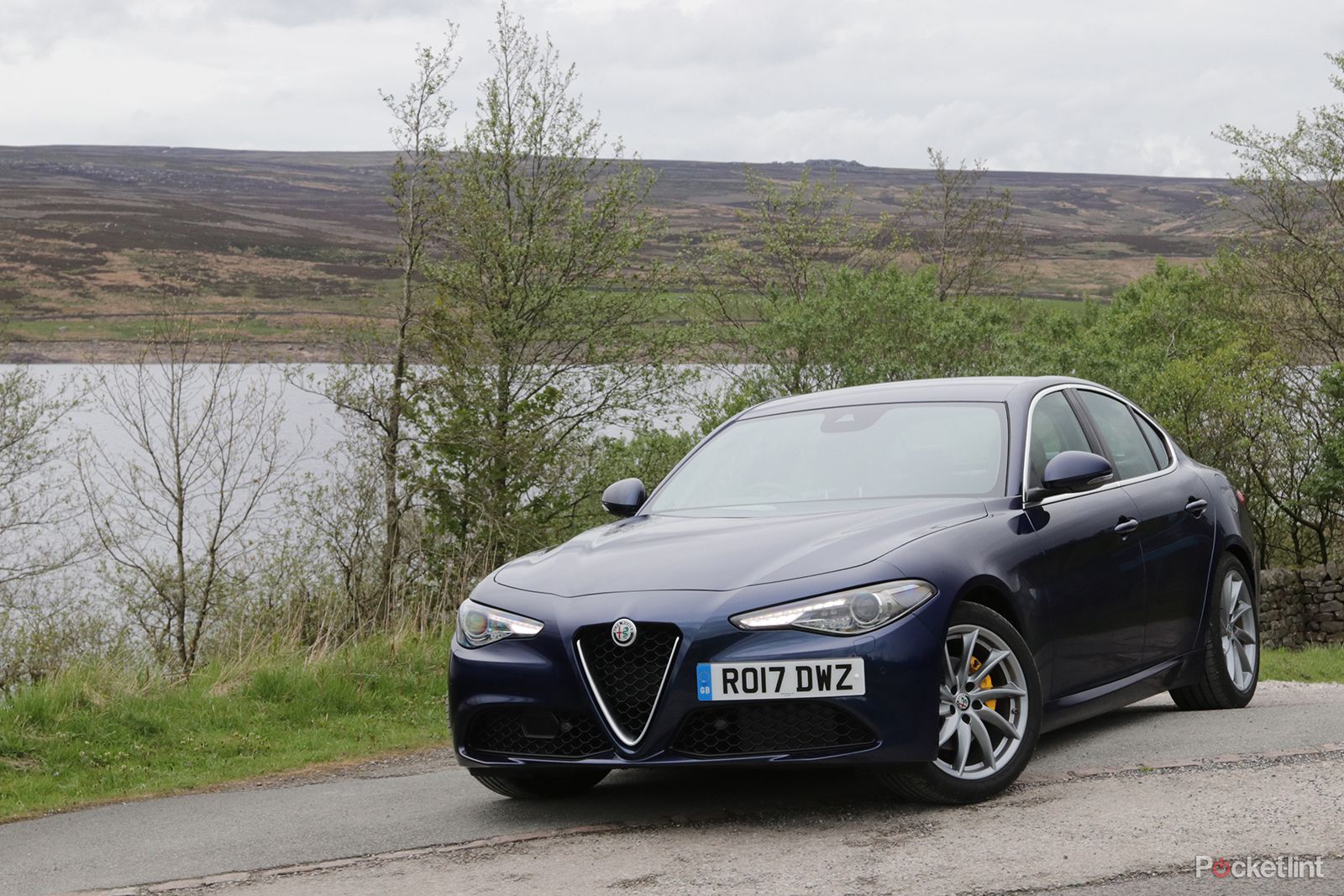
Alfa Romeo Giulia (2017) - 4.0 / 5
| FOR | AGAINST |
|---|---|
|
|
Its predecessor, the 159, went out of production in 2011. That car looked like a true Alfa, particularly from head-on. But a contemporary BMW 3-Series drove rings around it and was just better for everyday life. Most people bought a car from Germany instead.
The Giulia is different. After a dozen false dawns, one look down this car's spec sheet is all you need to see that there might be reasons to choose this Alfa over the competition. Its rear wheel drive and technical setup suggests that it has been designed precisely to steal back those customers from BMW, who love driving and want something with a soul.
Given affection for Alfa, if the Giulia looks right and drives well, then it will find favour. That's code for saying it'll be forgiven other flaws. So has Alfa finally done it? Do the Alfisti have the modern car of their dreams?
Alfa Romeo Giulia (2017) review: A super chassis
For many years, if you wanted the car that's fun to drive in this sector, you bought a BMW 3-Series. But in its current guise, the 3-Series's star is slightly dulled. It needs optional adaptive dampers to shine, and can sometimes feel a little inert. Audi's A4 prioritises comfort over dynamics. The Mercedes C-class is a curious mixed bag which sits somewhere between the two. Jaguar's XE currently leads the class for dynamics.
Which is good news for Alfa. Because having clearly studied the 3-Series recipe, Alfa's engineers have produced a gem of a chassis. Our car was fitted with the Q2 differential as part of a performance pack, which nets adaptive dampers. You pay extra for these and we have no way of assessing how a Giulia without them might perform. But with them? The Giulia tops the class to drive.
It is a lot of fun to hurl around a twisty road. It is dominated by its rear axle, feeling very rear-wheel drive, but without snapping into oversteer every second corner. Traction is impressive, too.
The responsive 2.0-litre petrol engine and huge, Ferrari-like steering wheel paddles make the 8-speed automatic gearbox a joy to interact with. It feels keen. Alive with spirit. Italian.
The Giulia's ride is standout for its cosseting quality and those special dampers keeping body control well in check. The structure feels very stiff; it doesn't flex around on a challenging road. And while the steering is spookily light at first, with a few miles of familiarity you realise it's perfectly good - its quickness takes some getting used to, but it is what makes the Alfa feel so alert and keen to change direction.
So what's the catch? Well, there isn't one. We never expected to write this, but for the drive from Ribblehead up through Hawes and then down into Nidderdale (you should try it), we'd take a Giulia over an XE, 3-Series, A4 or C-Class. Bravo Alfa.
Alfa Romeo Giulia Super (200hp) review: Losing its distinction?
Having fixed the drive - the aspect of the experience that's in recent years always been Alfa's weak link - you'd expect the rest of this review to be full of lazy clichés about beautiful body work, suspect quality and dubious dealers. Hold your horses, though, because the rest of the Giulia picture isn't quite as straight forward or perfect.
It starts with the design. There is a tendency to hear the words "Alfa Romeo" and immediately think "beauty". But while you wouldn't call the Giulia ugly, get beyond the deep Alfa shield grille that crowns this car's face and the Giulia isn't actually that great a piece of car design. Cover the badge up, and it lacks distinction. Park a BMW 3-Series next to it, and you'll be under no illusion which car Alfa's designers were trying to steal customers away from. Dimensionally and in proportions, the Giulia is an almost exact 3-Series match.
The face of the car is slightly bizarre, with the lamps plonked in space, long and creating a bird-like face, pinching the surfaces surrounding them and with no real link to Alfas past - nor presenting a naked expression of high-technology likes an Audi does. The surfaces are soft, they lack tension or the sense of motion you'd expect in an Alfa, too. You may believe that beauty sits in the eye of the beholder, but we think that it's a shame Alfa has lost its distinct, strong saloon look that both 156 and 159 embodied. No car designer we've spoken to rates this design.
Alfa Romeo Giulia (2017) review: Interior success
But step inside the Giulia and things improve, markedly. The interior has much greater distinction than the exterior. The neat integration of the display screen into the dashboard, the high quality (optional) tan leather of our test car and the driver's seat going really low all create a positive impression. The driving position is fine, too. What did we say about it not all being Alfa clichés, eh?
It's not perfect though. Details are a weak point: the gear-lever appears to be a cheap knock-off of BMW's design; the indicator stalks appear taken from a Fiat Tipo; and the infotainment system is a crib of BMW-meets-Mercedes (this isn't a bad thing, however).
Then you thumb the steering-wheel mounted starter button and curl your fingers around the leather wheel, feel the glorious aluminium paddles that wouldn't look out of place in a Ferrari and you think, yes, this car does actually feel special.
Alfa Romeo Giulia (2017) review: Doing enough?
But this isn't all about emotion. Many of us still want an Alfa, right up to the point where we're walking into the BMW or Audi dealership to sign up to one of their cars, because we know it makes more sense and think they're just a less risky, more reliable choice.
But the little things that used to make people take against Italian cars are mostly gone in the Giulia. The driving position is absolutely fine. The steering wheel adjusts up and down, and in and out. The centre tunnel doesn't intrude into your leg space or badly offset the pedals. The boot is about the same size as a Jaguar XE's. There's space in the back for adults, plus car seats fit in. And in our week with it nothing went wrong or fell off (we had to mention it, because there will be plenty of readers wondering).
But it serves as a point to say that the Giulia has quite clearly been given a significant amount of developmental love, and while there are one or two iffy details and finishes, that's true of its competitors too. And there is little here that we can see the sensibly minded taking against, or becoming significant reasons to avoid buying a Giulia.
A word on options here. Alfa is learning from the Germans, to such an extent that - like most test cars we get from BMW, Audi and Merc - this Giulia had over £10K worth of options thrown at it. Aside from the aforementioned Performance Pack for the drive (£1,950), the Lusso pack (a chunky £2,750) feels like the most significant, because of how much it contributes to the nice interior feel. It brings the full leather seats and wheel, dashboard and door caps, a choice of walnut or (as our car) silverwood dash inlays, heated seats, and a 7-inch digital cluster display.
Options on our car that we could probably live without include the driver assistance pack (£950; rear camera, auto highbeam, blind spot detection), yellow brake callipers, run-flat tyres, and Harmon Kardon audio. But the Climate Pack (£250) gets you extra vents, air-con glovebox and usefully nets you two extra USB ports. And the 18-inch wheels should be standard, but you'll need to find £750 for these. Be careful in the options list, as the Giulia isn't cheap. At least you can get Alfa Red for free, although our car's Montecarlo Blue paint scheme (£650) does suit the car.
Alfa Romeo Giulia (2017) review: The right tech approach
But Alfa has really cleaned up its act and nowhere is this better exemplified than in the Giulia's approach to in-car tech implementation.
Up until now, Alfa's interfaces have been slot-in jobs supplied by TomTom and typically just flat-out painful to use. Now, the Alfa and its suppliers have developed a system which works in much the same way as BMW iDrive. The 8.8-inch U-connect display also has a few of the elements of Mercedes-Benz Comand thrown in too, and is controlled by a rotary knob next to the gear-shifter. It's fair to say that if you're used to either BMW, Merc or Audi MMI systems that you'll feel right at home in the Giulia.
The system could use a little more colour, but the menu layout, the clarity of phrasing and labelling and the steps you go through to connect a phone or programme the sat-nav are similar to others at this level. Once you're familiar with the rotary controller's nudge left-right and up-down, scroll around, and press down methods, it's very easy to use.
Media connectivity for Spotify and Apple music both worked fine and the Giulia didn't lead us down farm tracks or send us off on strange routes. What's more, it was quick to respond and never froze during our week with it.
We applaud Alfa for moving away from the touch-screen route, as this system's far safer to use on the move.
Alfa Romeo Giulia (2017) review: A true Alfa at heart?
The one element we've deliberately avoided up to this point is the engine. Our Giulia came equipped with a newly developed, 2.0 turbo-petrol engine, producing 200hp. It sits in the range alongside two 2.2-litre diesels (one making 150hp, the other 180hp) and a just-launching 280hp petrol Veloce model. There's the scorching 510hp QV, too, which is a different beast altogether.
An Alfa's engine is its heart, responsible for much of the emotion of the drive. And unfortunately this petrol engine isn't one of the company's greats, in terms of stirring your emotions or creating sounds to thrill you.
Where it has winning quality is in its responsiveness. For a turbo-charged engine it is very lag-free and keen to respond to throttle inputs. And while it's a pale character compared to a Busso or even a T-spark of old, compared to other contemporary four-cylinder turbos, it is not without a voice - emitting a subtle rasp as you climb through 3,000rpm.
It's quick, too. It feels very good for its 200hp, and a 0-60mph time of 6.6 seconds is really respectable.
What it's not (indeed the Giulia isn't in general) is particularly refined. It's on a par with a 3-Series, but a significant way behind the new Audi A4. And our most significant disappointment with this engine centres on how strangled it feels in the upper rev range, notable because Alfas are supposed to be cars you enjoy revving. But there's not much enjoyment to a rev-limit that cuts in softly, as you reach 6,000rpm.
We achieved fuel economy in the low 20mpg range, perhaps accounted for by the fact we were bound to the city and thrashes out into the country during our week with it. On a motorway run, expect better returns, as the 8-speed auto gearbox means the Giulia cruises at low revs.
To recap
An Alfa that doesn’t do clichés. Less distinct-looking than before, and with a few iffy details, it is the best car in its sector to drive and has a well-judged interior and interface. Petrol-engine is a mixed bag, but this is an Alfa that’s got fun factor, feels special enough and you can buy with head as well as heart.

